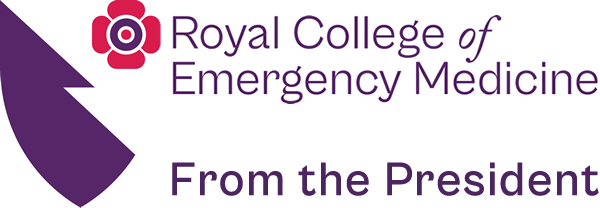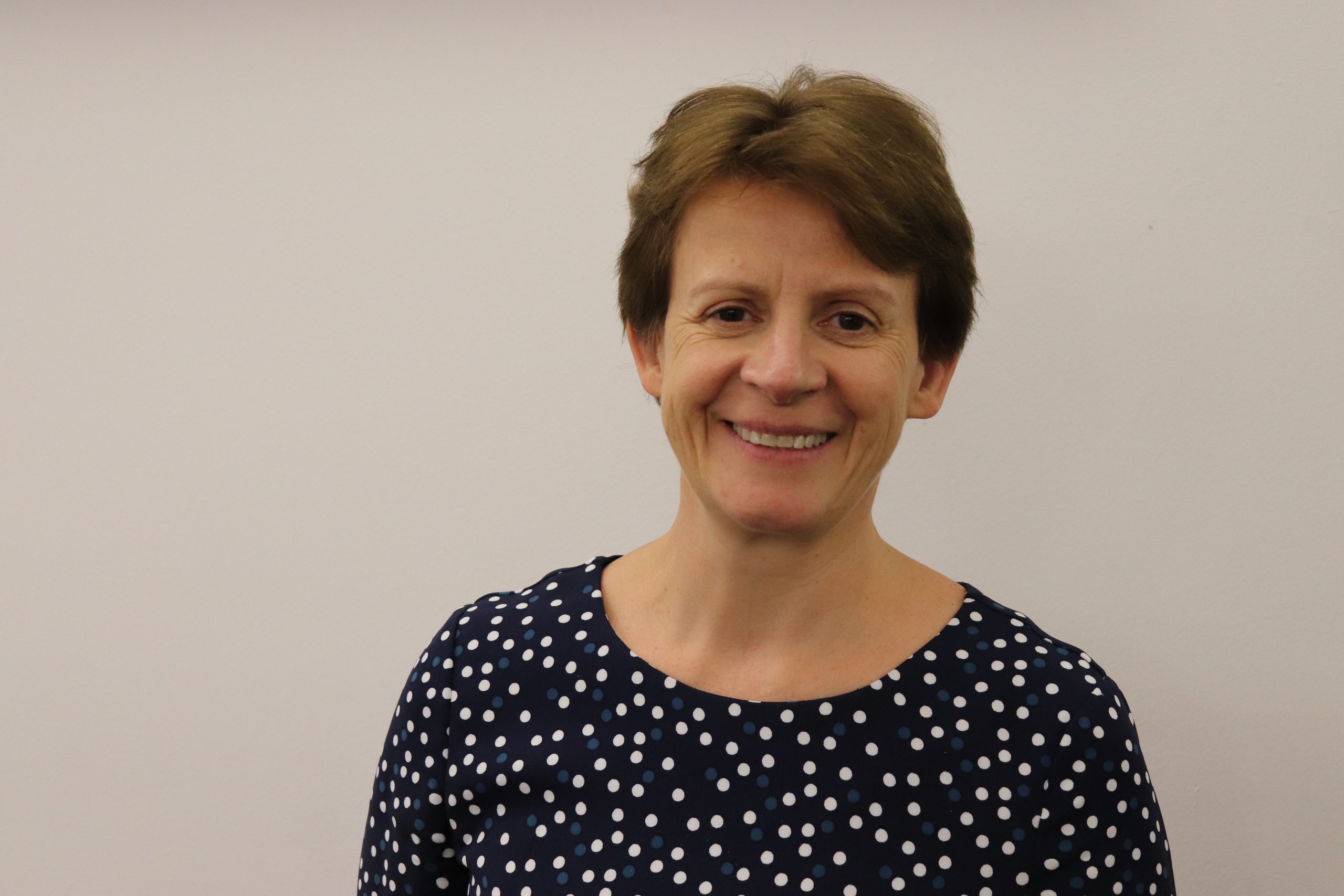The Royal College of Emergency Medicine is the professional voice of Emergency Medicine. As such our core role is in promoting and influencing the shape of the standards and systems that EM clinicians’ practice to and in. When you read this, I will have been President for a year. It has been an extraordinary year with challenges I could not have predicted when I was elected. The Covid pandemic has killed thousands of people, directly and indirectly. As ever Emergency clinicians have adapted and got on with helping our patients. Our clinical skills are used to manage the consequences of the infection as we cannot fight the infection directly with an effective treatment. Patients are frightened to come to hospital. The backlog of work in the NHS will be with us for years. In our EDs we are and will continue to see late presentations of cancers and complications of delayed surgery. We are also starting to see the consequences of an urgent care system stretched further by new demands and circumstances. So, things are going to be very hard going forward and all parts of the system will struggle. But there are also opportunities. These opportunities only really exist if we are transparent about the realities of the past as well as the future. One of the most difficult parts (and in my view one of the biggest failings) of the pandemic response is the lack of frank conversations with the public and with the NHS. We need to be much clearer about how hard things are going to be and a lot of that is to do with the state the NHS was in going into the pandemic. This is particularly obvious in relation to social care and health inequalities but let us focus on Emergency Medicine as delivered in our Emergency Departments.
Back in October 2019 when I took up the role, we were in a very difficult place in Emergency Medicine. I was convinced we needed radical change to the Urgent and Emergency Care system for us to have an effective safe system of delivering Emergency Care. I rapidly became used to having to comment on dreadful 4-hour access target performance with little sign that there was much that was going to change. We said that eliminating crowding in Emergency Departments must be the number one priority of any incoming Government. By December 2019 not a single hospital in England was making the 4-hour target. Over 300,000 patients waited more than 12 hours in Emergency Departments in 2018-2019. Scotland, where performance has been consistently stronger, was struggling, In Wales portacabins were being used to off load patients from ambulances and Northern Ireland achieved 4-hour performance of less than 55%. The system was failing patients and failing staff with high attrition rates and low recruitment. Given how difficult things were then and how difficult they are likely to be going forward, the opportunity that the pandemic has given us is to challenge the status quo and demand that things must be different, simpler, and more collaborative.
Back in January one of our Fellows (Nicola Jakeman) emailed us in response to a piece Higgi (aka Ian Higginson VP) wrote in the supplement. She raised a series of questions-
‘Is our specialty, in its current form, fit for purpose for now/or for what we think the future might be?’ What do our patients need? What does our system need? What do we as a specialty want? What does the future look like for our healthcare system and how can we influence this? How should our specialty prepare for the future and who do we need to collaborate with? What do we need to give up?
These are exactly the questions we must face now and with great urgency. We need to be transparent about the problems and honest about the challenge of change. We have no reason to think that what others will do will make Emergency Departments function better. We have repeatedly used the phrase that we must ‘stop being the safety net of the system’ but if we do not influence the direction of travel in health policy there is a risk we end up in the same place very quickly. I recognise that there are lots of concerns about the 111 projects, redirection to SDEC, potential booked slots in EDs, and alternative access points to care, both from EM professionals and patients. But unless we can have a conversation with the public, GPs and our fellow secondary care clinicians about who should come to an Emergency Department and who may be able to get care another way we cannot address the core fact that demand has outstripped ED resource. This will not address the core problem of exit block, but it may mean that we can focus our finite resource and effort on those patients who will benefit most from our expertise. RCEM will always argue for well-resourced Urgent and Emergency care, which is high quality, patient centred, accessible and protects the most vulnerable in society. But given how tight budgets are going to be we need to make sure we are getting resource to the right place. Exit block problems reduced during the main Covid surge as bed availability got better but we are all aware that bed capacity has gone down as pressures to restart surgery and have social distancing kick in. How hospitals manage exit block and crowding in EDs is yet again going to define how we get through winter. We are going into this winter with the risks of a second wave of Covid, seasonal flu and a NHS workforce which is profoundly tired.
And so, we come to the traditional drivers of action – performance measurement.
When the 4-hour access standard was introduced in 2004, when there had been no EM specific reported metrics previously, there was significant investment in Emergency Departments – facilities and workforce. We should remember that there was no evidence base for the standard when introduced. It took about 3 years to fully implement and for those benefits to become apparent. It was introduced at a time when there was little exit block, Primary Care still was contracted to provide OOH services, Acute Trusts had larger bed bases, community beds were still widely available, and demand was significantly less.
However, the situation has changed significantly in more recent years and we must not remain wedded to previous positives when they have in fact become now negatives. Departments have become increasingly crowded and corridor care has become normalised. The negative unintended consequences of the 4-hour access standard became increasingly evident. Managers focused on ‘low hanging fruit’ and quick wins’ to try and improve 4-hour performance. This has meant a push to deploy staff to treat lower acuity patients and imaginative use of spaces to get patients ‘off the clock’.
The patients who have suffered the most from this are the sickest and the oldest. In January 2020 58% of admitted patients breached the 4-hour access standard. This indicates how dependant performance against the standard is on non-admitted lower acuity patient presentations. RCEM regularly campaigned on these issues, pointing out how desperate the situation was becoming and how it was increasingly difficult to maintain or recruit a workforce to deliver clinical care because of the stress and despair staff were feeling by being forced to compromise the care they deliver, whilst being criticised for the inevitable errors inherent to the poor systems they were forced to work in.
It was inconceivable that we would not engage with the Clinical Review of Standards in England because that was the only meaningful attempt to change the system for the better – whatever the origins of the original review. The proposed metrics started from a very different point to where they are now, and we have aimed to influence that positively throughout
It is English policy that is to the fore in these discussions, but we are a College of all the nations. Healthcare is a devolved function and so it is entirely possible for the UK to have differences between the nations in how systems are organised and how the systems are held accountable through performance metrics. Indeed, it may be very useful to have different systems to compare.
RCEM believes that any bundle of measures must reflect the patient journey, reduce ‘no value added’ delays and remove the opportunity for perverse incentives and gaming. We want there to be more focus on patients who are going to be admitted as these sicker patients currently receive minimal attention from the four-hour access standard once it has been breached. Exit block is most often caused by patients left waiting for a ward bed. Having a metric that puts a spotlight on these patients, should improve their safety, experience, and help the flow in a department. Exit block endangers our most vulnerable patients and any performance metric must reduce crowding and ward access delays. I believe a focus on the sickest patients brings us back to Nicola’s questions – we are a specialty that cares for the acutely ill (physical and mental) and acutely injured. Our lights are always on and we are the safety net for the most distressed and in need. Let us be clear about our purpose, focus our expertise on the patients we are uniquely able to help most and train and improve our services so we deliver high quality safe care while looking after our staff and work with others such as the RCP, RCS, RCGP and 111 to make sure patients get the care they need where and when they need it.
Dr Katherine Henderson, President of the Royal College of Emergency Medicine & EM Consultant at St Thomas’ Hospital
This is an extract from the Emergency Medicine Journal – Supplement, October 2020 ed.
Read more here: https://emj.bmj.com/content/suppl/2020/09/24/37.10.DC1


